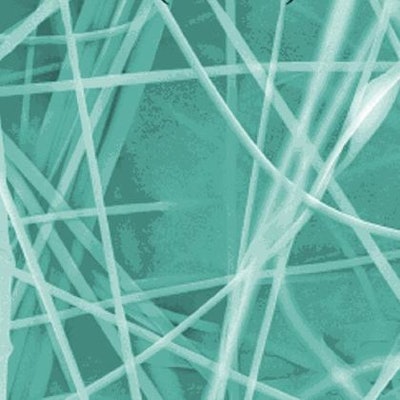
Professors Frederick Gosselin and Daniel Therriault, along with their master's student Renaud Passieux, are not related to Spiderman. Nevertheless, these Polytechnique Montreal researchers have produced an ultra-tough polymer fiber directly inspired by spider silk. They recently published an article about the project in the journal Advanced Materials.
Spider silk: a thread with stunning properties
Three to eight microns in diameter but five to ten times tougher than steel or Kevlar: despite its lightness, spider silk has such remarkable elongation and stretch-resistance properties that humans have long sought to replicate it, in order to make products with those same characteristics.
In large part, spider silk owes its exceptional strength - meaning its ability to absorb a large amount of energy before failing - to the particular molecular structure of the protein chain of which it's composed. The mechanical origin of its strength drew the interest of researchers at the Laboratory for Multiscale Mechanics in Polytechnique Montreal's Department of Mechanical Engineering.
"The silk protein coils upon itself like a spring. Each loop of the spring is attached to its neighbors with sacrificial bonds, chemical connections that break before the main molecular structural chain tears," explained Professor Gosselin, who, along with his colleague Daniel Therriault, is co-supervising Renaud Passieux's master's research work. He added: "To break the protein by stretching it, you need to uncoil the spring and break each of the sacrificial bonds one by one, which takes a lot of energy. This is the mechanism we're seeking to reproduce in laboratory,"
Imitating nature with polymer fibers
Their project involves making micrometric-sized microstructured fibres that have mechanical properties similar to those of spider silk. "It consists in pouring a filament of viscous polymeric solution toward a sub-layer that moves at a certain speed. So we create an instability," said Renaud Passieux. "The filament forms a series of loops or coils, kind of like when you pour a thread of honey onto a piece of toast. Depending on the instability determined by the way the fluid runs, the fiber presents a particular geometry. It forms regular periodic patterns, which we call instability patterns."
The fiber then solidifies as the solvent evaporates. Some instability patterns feature the formation of sacrificial bonds when the filament makes a loop and bonds to itself. At that point, it takes a pull with a strong energy output on the resulting fibre to succeed in breaking the sacrificial bonds, as they behave like protein-based spider silk.
"This project aims to understand how the instability used in making the substance influences the loops' geometry and, as a result, the mechanical properties of the fibers we obtain," explained Professor Therriault. "Our challenge is that the manufacturing process is multiphysical. It draws on concepts from numerous fields: fluid mechanics, microfabrication, strength of materials, polymer rheology and more."
A vast range of applications for future tough fiber composites
These researchers think that one day, there will certainly be composites obtained by weaving together tough fibers of the type they're currently developing. Such composites could, for example, make it possible to manufacture new safer and lighter casings for aircraft engines, which would prevent debris from dispersing in case of explosion. Many other applications can be foreseen, from surgical devices to bulletproof clothing to vehicle parts.





















